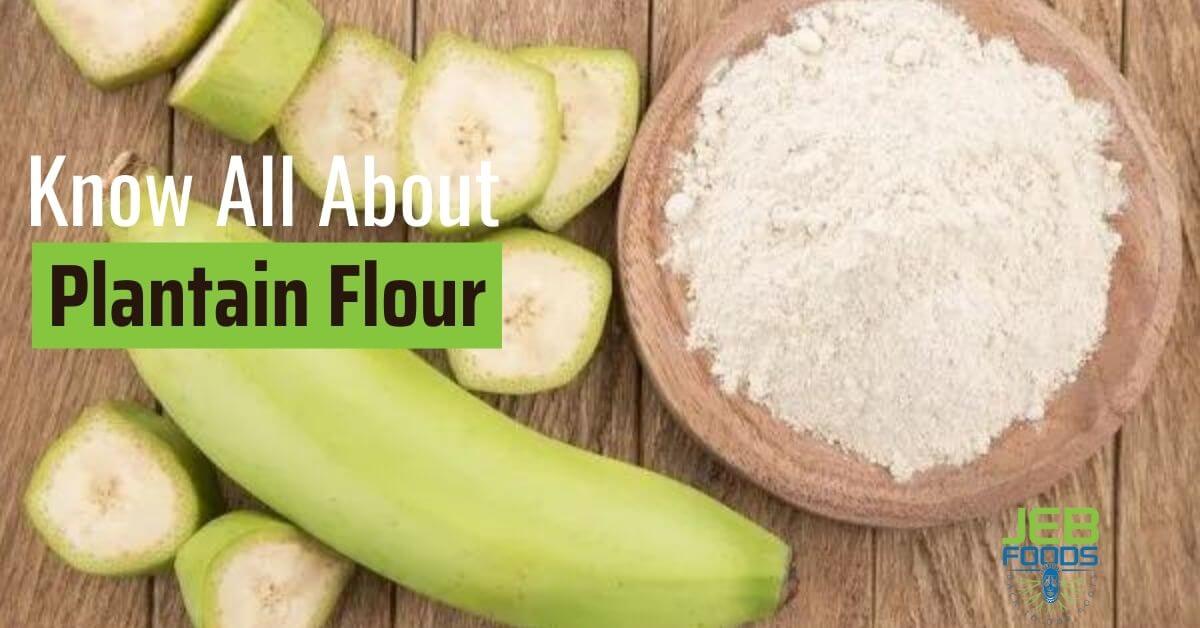Are there any challenges of using cassava flour for bread production? Wheat flour is the popular flour used widely for bread production.
But a study was made to the extent to which cassava flour could replace wheat flour in the composition of a loaf of bread without compromising sensory properties such as texture, aroma, flavor, and color compared to bread made solely with wheat flour.
Here is how to use cassava flour instead of wheat flour
According to the findings of a study, cassava flour could replace between 20% and 30% of the wheat flour typically used to make bread without significantly altering its sensory characteristics or impairing the leavening process that causes the dough to rise.
When only cassava flour was used for baking bread, the chemical and physical properties of the bread samples resulted in a low bread-making potential.
Here is a detailed explanation about cassava flour and all about it.
Is there Gluten in Cassava Flour
Table of Contents
ToggleThere is no gluten in cassava flour. It prides as a gluten-free flour and it is suitable for baking.
But the lack of gluten caused a significant reduction in viscoelastic properties, the pasting properties observed in this flour were challenges Of using Cassava Flour For baking and bread production.
As a result, cassava flour processing had handling issues during mixing and baking, especially in the absence of egg white or oil.
Under these conditions, the batter lacked sufficient cohesive properties and was disaggregated and separated into different phases.
Egg white can improve the cohesion of starch granules, increasing the dough’s stability. I obtained a consistency suitable for effectively retaining gases in a gluten-free product when I added egg white to the second batch of batter.
You can get your gluten-free cassava flour here
Albumins have been shown to form a relatively stable aerated foam structure, which may be suitable for stabilizing other dough ingredients such as lipids without using hydrocolloids.
The egg protein network coagulated during baking, securing the loaf shape. Furthermore, the addition of eggs resulted in higher protein content.
By incorporating egg white and extra-virgin olive oil into the cassava bread formulation, the sensory characteristics of gluten-free bread were significantly improved.
Compared to pure cassava bread, the addition of eggs and oil had a higher loaf volume, a softer texture, a more regular crumb structure, and less gumminess.
The findings demonstrated that gluten-free cassava bread that is nutritious and palatable for celiac patients’ diets could be made using egg white and extra-virgin olive oil, even in the absence of hydrocolloids and industrial improvers.
Here is the number one reason you should be baking with a gluten-free flour

How Common Is Coarse Cassava Flour In The USA
Manioc flour, also known as cassava flour, is a dry and coarse flour derived from the manioc/cassava root, a close relative of West African ‘garri.’ It is white in color and tasteless.
Cassava flour is gaining popularity as a gluten-free alternative to wheat flour and other gluten-containing flours. When compared to other flours, it has more calories.
North America is expected to grow rapidly, owing to many global key players from various sectors in the region.
Cassava flour is high in starch, which is the primary source of carbohydrates and dietary fibers. Cassava flour is in high demand in the global flour market due to its low gluten content compared to other flour varieties.
The global cassava flour market is dominated by demand from North America and the Asia Pacific. Cassava flour investors can expect higher returns soon due to increased demand for the product.
Because cassava flour contains less gluten, it is highly demanded in the global cassava flour market for food and bakery products.
Increased demand for processed foods leads to increased investment and new food industries focused on producing gluten-free products.
To meet the demand of health-conscious customers, these companies are using cassava flour instead of gluten-based flour in their products.
Cassava flour is also regarded as the third-most important energy source in the tropics, providing an opportunity to meet demand.
Let me recommend for you Jeb Foods Gluten-free, Grain-free, Nut-free Cassava Flour
How Much Flour Does One Pound Of Cassava Root Make
When I tried out my homemade cassava flour, I used 3 pounds of whole unpeeled cassava root. From my calculations, 1 pound of cassava root will give you 140g or 1 cup of cassava flour.
Larger cassava roots produce more flour than younger roots, and mature roots contain more fiber. This excess fiber may affect baking, resulting in gritty baked goods.
Cassava root, like most vegetables and fruits, contains a lot of water. You’ll notice that while it appears that you’ll have a lot of tubers.
The flour yield may appear to be small at first; this may be useful to you depending on how frequently you use cassava flour or if you have limited access to it.
If you can’t get your hands on branded cassava flour for whatever reason, or if you’ve always wanted to make your cassava flour at home, try this:
Let me recommend Jebfood Cassava flour for you, products are always in stock.
Homemade Cassava flour
3 pounds of whole cassava root are required.
STEPS
- Preheat your oven to the lowest setting, 170F, and wash the cassava tuber, peeling off the skin.
- Cook the cassava root for 15-20 minutes, or until it slightly forks tender, but do not overcook it, or it will not grate properly.
- Drain the hot water from the stockpot and replace it with cold water to allow the cassava to cool for at least 10 minutes.
- Slice in thin sheets or grate and arrange in a single layer on a baking sheet; if necessary, use additional baking sheets.
- If you grate your yuca in a food processor, you will end up with cassava dough.
- You could also use a dehydrator, but I preferred to use my oven.
- Bake for up to 8 hours, or until all of the water has evaporated (depending on the size of your shreds).
- To grind the dried shreds, use a food processor or blender. They must be dehydrated to obtain flour.
- Blend for a minute or more to get rid of the larger pieces. The result is a fine silt-like flour with a very pale color.
Can Anyone Identify Cassava Specific DNA From Mix Flour
Cassava starch is the primary material used to adulterate more expensive starches, necessitating sensitive detection techniques to detect and deter adulteration.
Brunetto et al. proposed the concept of digital ddPCR at the end of the twentieth century, which distributes sample DNA evenly into many reaction units and then independently performs PCR amplification on each reaction unit.
ddPCR was used to detect cassava-derived components in starch accurately and quantitatively. A linear relationship was discovered between cassava weight, DNA concentration, and amplified DNA copy number.
The method can quantify the level of adulteration in commercially available starch. It is also compatible with a wide range of pollutants.
As a result, ddPCR technology can distinguish between intentional fraud and unintentional contamination.
The method can also be used for other types of starch testing, and this quantitative testing system is a valuable tool for quality control monitoring, regulatory compliance, and consumer advocacy.
More Interest: A guide to gluten-free mix
Types Of Gluten-Free Flour To Use For Making Delicious Recipes
It’s often a good idea to have a variety of gluten-free flours on hand to create blends based on what works best for a particular recipe.
The consistency, texture, and flavor you want in a cookie differ significantly from what you want in a pancake, pizza crust, or donut.
In the world of gluten-free flour, one size does NOT fit all. Each flour has a distinct texture, consistency, flavor, and bite which can be a Challenge Of Using Cassava Flour For making different dishes and baking like Bread Production
I discovered that for a gluten-free flour blend to have that familiar gluten-like texture, “starch” and “flour” must often be combined. So it doesn’t crumble in your hands or mouth before you even bite into it.
Gluten, a protein found in wheat-based foods such as flour, is responsible for the elasticity and stretch in the food you’re making.
When mixed with water, it activates and develops during kneading to form a web capable of trapping the gasses released by leavening agents such as yeast or baking powder.
The greater the amount of gluten, the better the food will hold its shape.
It is critical to understand the role of gluten in your flours, mainly gluten-free replacements. so you can choose the best type of flour to substitute
Flour is a powder made by finely grinding grains, nuts, seeds, roots, and anything edible that can dehydrate. It is used in almost every culture in some form or another, primarily to make bread or pastry.
The rise of celiac disease and gluten-free diets, on the other hand, has encouraged increased production of flours made from other grains such as rice, quinoa, or oats, and they are now much more widely available for purchase.

Top Gluten-Free Flours For Baking
These are the top ten gluten-free flours and starches (plus four baking extras) that I always have on hand:
- Cassava flour
- Brown rice flour
- Amaranth flour
- Coconut flour
- Almond flour
- Millet flour
- Teff flour
- Sorghum flour
- Tapioca starch
- Corn starch
- Arrowroot starch
- Flaxseed meal
- Xanthan gum
- Baking soda
- Baking powder
I can mix and match these in a million ways using different recipes. I’ve discovered that I use more flours than others – but it all depends on the recipe.
Everyone has preferences for what to use and leave out, depending on who creates the recipe.
Here is the perfect gluten-free mix you can try today.
What Happens If You Eat Raw Cassava
This does not have direct impact on the Challenges Of Using Cassava Flour For Bread Production but Cassava can be dangerous if consumed raw, in large quantities, or improperly prepared.
This is due to cyanogenic glycosides in raw cassava, which can cause cyanide to be released in the body when consumed.
Cassava is a vegetable that is a staple in many diets around the world. It is a good source of nutrients, but it should not be consumed raw.
Because raw cassava contains cyanide, which is toxic when consumed, it is critical to prepare it properly.
Always properly prepare cyanogenic plants like cassava and bamboo shoot before eating them. Cyanogenic plants should be chopped into small pieces, soaked in water, and thoroughly cooked in boiling water.
Pounding or crushing cassava leaves and then boiling them in water is an effective cyanogen removal method.
Indeed, after 15 minutes of cooking fresh cassava chips, approximately 90% of free cyanide is removed, compared to a 55% reduction in bound cyanide after 25 minutes.
At 72°C, cooking destroys the enzyme linamarase, leaving a significant portion of the glucoside intact.
Cyanide poisoning is a treatable condition that can be cured if detected early and treated promptly.
Most people die because a diagnosis is not made quickly enough or is not considered from the beginning. Because cyanide poisoning is uncommon, the treating physician should be made aware of the possibility.




